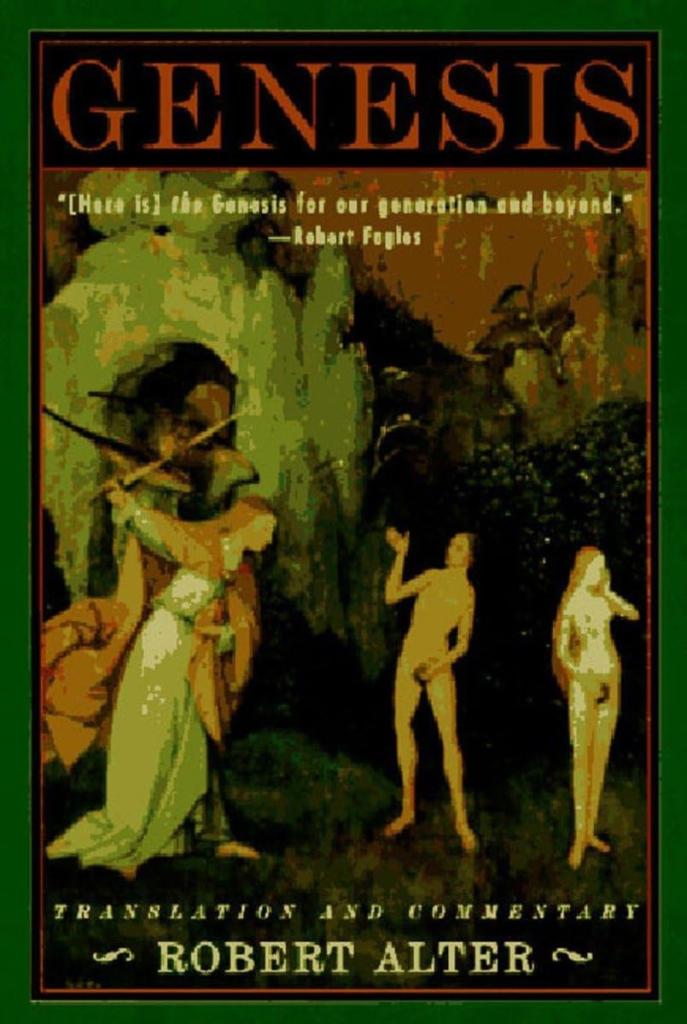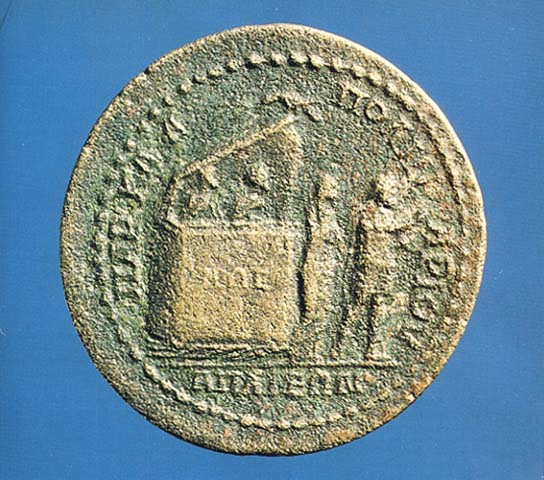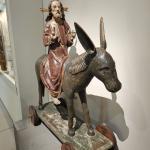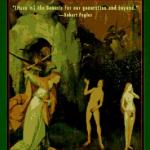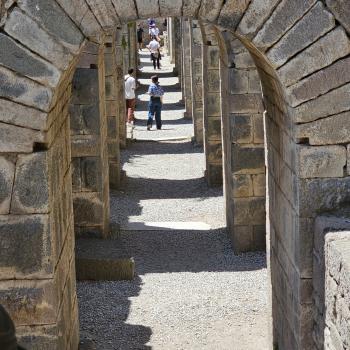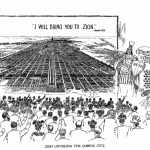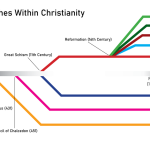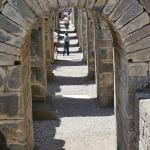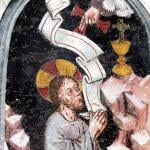The beginning of Gen. 6 includes one of the most controversial passages in the whole book, a passage speculated about throughout Biblical history, including in the NT (see e.g. Jude, and 2 Pet. 2, and my lengthy study on this passage and its ongoing influence in Jesus the Seer). The early Jewish interpretation of this passage is important. The text, in Alter’s translation reads as follows: “as humankind began to multiply. over the earth and daughters were born to them, the sons of God saw that the daughters of man were comely and they took themselves wives however they chose. And the Lord said “My breath will not abide in the human forever, for he is but flesh. Let his days be a hundred and twenty years. The Nephilim were then on the earth, and afterwards as well, the sons of God having come to bed with the daughters of man who bore them children, they are the heroes of yore, the men of renown. And the Lord saw that the evil of the human creature was great on the earth and every scheme of his heart’s devising was only, perpetually evil. And the Lord regretted having made the human on earth and was grieved to the heart. And the Lord said ‘I will wipe out the human race I created from the face of the earth from humans to cattle etc. But Noah found favor in the eyes of the Lord. This is the lineage of Noah–who was a righteous man, he was blameless in his time. Noah walked with God….”
This of course is the backstory to the story of the flood which carries on through to the end of Gen. 8. What is the story in Gen. 6.1-4 really all about? Most early Jewish interpreters, including the NT writers, take the phrase ‘sons of God’ to refer to angels, in this case wicked angels who mate with human women of God’s chosen people. And the end result is that they have offspring who are giants, the Nephilim, who show up again in the story of the conquest of Canaan. They are mighty men, even war heroes for someone, like Goliath of the Philistines. What God is upset about is the cross-breeding between humans and angels, which is viewed as a disastrous violation of God’s intended creation order, just as would be humans cross-breeding with animals. This leads to God regretting he made humans in the first place, and resolving to wipe out humanity except for Noah and his family. Notice the reference to widespread and profound evil, and only evil is being continually being devised in the hearts of humans. Profound sin leads to deep corruption and wicked behavior. One of the more creative dealings with this chapter and its sequel in Joshua is Mike Heiser’s The Unseen Realm. He argues that the conquest of Canaan was not about wiping out just anyone and everyone in the holy land that stood in the way of God’s people settling there. Rather it was about doing away with the Nephilim and their descendants. Joshua was to wage a holy war against them, not against just any pagans in the land. This changes the way one looks at holy war, and in a sense, it would be seen as completing the task the flood was meant to accomplish– namely wipe out wicked, cross-breeding humanity. I’m inclined to think Mike is right (cf. the book of Enoch which definitely interprets Gen. 6.1-4 and its sequel this way, but also see the reference to the Nephilim in Num.13.33, and cf. Ezek. 32.22 -32 especially vs.27 and in various inter-testamental books such as Judith, Sirach, Wis. Sol.). Thus Jude and 2 Pet. and cf. 1 Pet. 3 are talking about the judgment on these fallen angels involving Christ.
As most will know, there are a variety of flood stories from the ANE, not just in Gen. 6-8. The Babylonian Genesis story known as Enuma Elish, has some similarities to the Gen. 1-2 story except it involves pre-existing matter and dueling deities. It’s clear the Genesis story did not derive from the seventh century B.C. story found in the palace of Ashurbanipal. But there is also the Gilgamesh epic in which Utnapishtim tells how he survived the great flood, but this story is in fact based on a yet earlier account called the Atrahasis epic from Babylon dating to about 1600 B.C. The retelling of the latter epic by Berossus 280 B.C. is known to Josephus, and there are some close parallels between the Genesis story and this earlier epic. Now the proper conclusion to draw, since there are various ANE flood stories is that there was indeed a giant flood, known to various ANE peoples, and the stories are similar enough to make clear something drastic happened. Most recently, Nat Geo has taken up the story and evidence of an ancient civilization and a fresh water lake buried at the bottom of the Black Sea just north of Turkey which provides more evidence of a giant flood. The point is that these stories are about ‘the then known world’ not the whole world as we know it. If indeed an ark was built which landed in ancient Armenia, then called Urartu, or as the Bible says it, on the mountains of Ararat in southeastern Turkey it would have been a massive flood indeed. And there may even be evidence at Gobeckli Tepe, a high place dating to 8000-10000 B.C. for a lot of river sand has been found that covered the stone columns and circles found there beginning in the 1990s. In other words, the story of Noah has a historical basis in the large regional flood that various ancient cultures recorded. Here’s a brief sample of one of these old tales that is like the Genesis account….
“The flood story recounted by Utanapishti runs as follows.The god Ea warned Utanapishti of an imminent flood and instructed him to build a boat to preserve life. The chief god, Enlil, then brought a flood upon the world which lasted six days and seven nights, following which the ark landed on Mt Nimush[9] (in modern Iraqi Kurdistan).
After another seven days, Utanapishti released a dove, which returned, then a swallow, which also returned, and finally a raven, which did not return. The flood clearly now over, Utanapishti offered a sacrifice on the mountain, and the gods gathered round like flies to savor the smell of the sacrifice. Finally, Utanapishti was made immortal.”
The story of Noah became so famous that there were actually coins minted of Mr. and Mrs. Noah for tourists coming to Mt. Ararat.
This coin, depicting the events of the story of Noah’s Ark related in Genesis 6–8, is the only coin-type known to bear a Biblical scene.
Apameia Kibotos was a Phrygian city established by Antiochus I (280–261 B.C.) who named it after his mother, Apameia. At that time, there were at least two other cities in the region named Apameia, one in Bithynia (northern Turkey) and the other in Syria. The addition of the word kibotos, which means “ark” in Greek, differentiates this particular Apameia from the others.
The Jewish community in Apameia was probably as old as the city’s foundation in the third century B.C.1 The legend of Noah seems to have been localized at Apameia Kibotos, and the Jewish element in Apameia was strong enough, as early as the time of Jesus, to give the city the name, Kibotos, derived from the Biblical story.
On the Israel Museum ark coin three portions of the flood story are depicted on one side. In the center of the coin, the head and shoulders of Noah and his wife protrude from the ark, perhaps to see if the rain has stopped. The ark, depicted as a box with an open lid, floats on water while its lid shelters Noah and his wife from the rain. The side of the ark is inscribed with the three Greek letters NWE (Noah).
The second portion of the flood story is shown above the ark’s lid. A dove, the olive spray in its beak symbolizing the subsidence of the waters and the end of the flood, lands on the ark cover.
The third episode in the story is shown just to the right of the ark: Noah and his wife stand with arms upraised in an attitude of grateful prayer for their salvation.
The Greek inscription on the lower part (exergue) of the coin (APAMEWN) means “Of the people of Apameia.” The inscription at the upper edge of the coin (PAR KL APOLINARIOU) translates as “by KL [Claudius?] Apolinarious” and refers to a person, unknown to us, who may have been the magistrate of the mint or the head of local games.
The vessel may be shaped like a box rather than a boat because Greek artists had already used box-forms to represent boats. The Jewish artist who engraved Noah’s Ark on this coin-medallion may have used Greek examples as his model. In depictions of the Greek myths of Danae and Perseus and of Auge and Telephos, Danae and Auge each floated across the sea in a box. Another explanation for the representation of the ark as a box on this coin-medallion is that one of the meanings of the Hebrew word teva is “box,” “chest” or “coffer.” Teva also means “vessel,” “boat” or “ark.” The Hebrew Bible uses the word teva to describe both Noah’s Ark and the vessel made of bulrushes in which Miriam placed her son, Moses. In the Septuagint, the third century B.C. Greek translation of the Hebrew Bible, teva is translated as kibotos, a word which means “box” as well as “ark.” Noah’s vessel may, therefore, appear to be a box because of these meanings of kibotos and teva.
On the obverse side of the coin, the Roman Emperor Trebonianus Gallus is portrayed.


